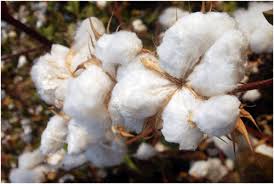What are the Advantages, Disadvantages, and Uses of Cotton Fiber
Cotton, one of the world’s most widely used natural fibers, has been a staple in textile manufacturing for centuries. It is derived from the fluffy fibers surrounding the seeds of the cotton plant and is known for its softness, breathability, and versatility. This article explores the advantages, disadvantages, and various applications of cotton fiber.
Cotton is classified as a natural fiber and is obtained from the fluffy fibers that surround the seeds of the cotton plant (Gossypium). These fibers are carefully harvested, processed, and transformed into textile cotton fiber to create a different range of cotton fabrics.

Advantages of Cotton Fiber
Cotton fiber has a lot of advantages that make it a popular and widely used material. Here are some of the key advantages of cotton fiber:
- Cotton is very Soft and Comfortable. It has a natural, breathable texture that feels pleasant against the skin, making it a preferred choice for clothing and bedding.
- Cotton is highly breathable, allowing air to circulate through the fabric.
- It has excellent Absorbency power which makes it suitable for towels, bathrobes, and other personal care products.
- Cotton fibers are strong and durable, allowing them to withstand frequent washing and extended wear.
- Cotton is a hypoallergenic material, which means it is less likely to cause allergies or irritate sensitive skin.
- Cotton is a natural and biodegradable fiber, making it an environmentally friendly choice.
- Cotton readily absorbs dyes, allowing for vibrant and long-lasting colors. It can be easily dyed in a variety of shades and patterns, making it a popular choice for apparel and home textiles.
Disadvantages of Cotton Fiber
While cotton fiber has many advantages, it also has a few disadvantages that should be considered. Here are some of the disadvantages of cotton fiber:
- Wrinkle easily, especially when subjected to washing or drying.
- Cotton has the potential to shrink when exposed to hot water and high heat during laundering
- Color fades away under the sunlight.
- Cotton is not suitable for water-resistant or moisture-wicking applications where rapid drying is required. In these cases, synthetic fibers may offer more suitable alternatives.
Uses of Cotton Fiber
- Apparel and Textiles: Cotton is primarily used in the production of clothing, including shirts, dresses, jeans, underwear, and socks. Its softness, breathability, and hypoallergenic properties make it a popular choice for everyday wear and intimate garments.
- Home Furnishings: Cotton finds extensive use in the manufacturing of home textiles such as bed sheets, pillowcases, towels, and curtains. Its comfort, durability, and natural aesthetics make it a favored material for creating cozy and inviting living spaces.
- Medical and Personal Care: Cotton is widely used in the healthcare industry for products such as surgical dressings, bandages, swabs, and personal hygiene items like cotton balls and cotton buds. Its gentle nature and ability to absorb moisture make it suitable for these applications.
- Industrial Uses: Beyond textiles, cotton fibers have industrial applications as well. They are used in the production of filters, canvas, tents, ropes, packaging materials, and even banknotes, thanks to their strength and versatility.
Conclusion
Cotton fiber continues to be a widely utilized and valued material due to its numerous advantages. From its exceptional softness and breathability to its durability and sustainability, cotton remains a preferred choice in the textile industry. Despite some disadvantages like wrinkling and shrinkage, the versatile applications of cotton in apparel, home furnishings, healthcare, and industry contribute to its enduring popularity as a natural fiber.


